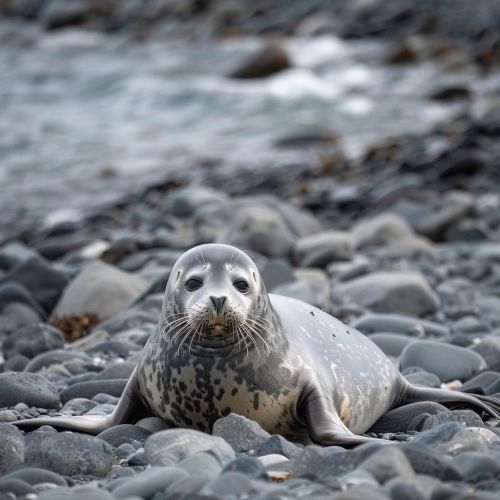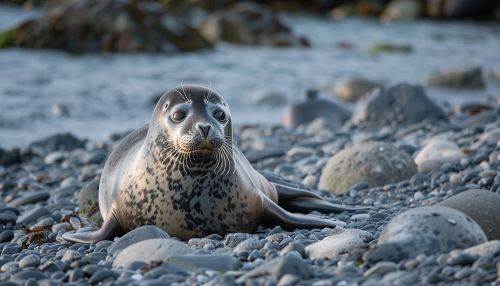Pinniped
Overview
Pinnipeds are a widely distributed and diverse group of semi-aquatic marine mammals. They comprise three families: Odobenidae (the walrus), Otariidae (eared seals, including sea lions and fur seals), and Phocidae (earless seals). Pinnipeds are typically characterized by their fin-like limbs, thick blubber layer, and their ability to thrive in both aquatic and terrestrial environments.
Evolution and Taxonomy
The evolutionary history of pinnipeds is complex and still a topic of ongoing research. The earliest known pinniped fossils date back to the late Oligocene epoch, approximately 25 million years ago. The three extant pinniped families are believed to have diverged from a common ancestor during the late Miocene epoch.


Anatomy and Physiology
Pinnipeds have a number of unique anatomical and physiological adaptations that allow them to thrive in their semi-aquatic lifestyle. Their bodies are streamlined for efficient swimming, with powerful, flipper-like limbs and a layer of blubber for insulation and buoyancy. Pinnipeds also have a number of adaptations for deep diving, including a large spleen for storing oxygen-rich blood and a flexible ribcage to withstand the pressure of deep dives.
Behavior and Ecology
Pinnipeds exhibit a wide range of behaviors, from the solitary habits of some earless seals to the highly social behaviors of sea lions and fur seals. Many species are migratory, traveling vast distances to feed or breed. Pinnipeds are also known for their vocalizations, which play a crucial role in communication, especially during the breeding season.
Conservation
Many pinniped species have been heavily exploited by humans for their fur, meat, and oil. While some species have rebounded thanks to conservation efforts, others remain at risk. Threats to pinnipeds include habitat loss, pollution, climate change, and bycatch in fishing gear.
